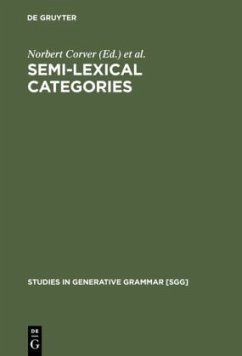The architecture of the human language faculty has been one of the main foci of the linguistic research of the last half century. This branch of linguistics, broadly known as Generative Grammar, is concerned with the formulation of explanatory formal accounts of linguistic phenomena with the ulterior goal of gaining insight into the properties of the 'language organ'. The series comprises high quality monographs and collected volumes that address such issues. The topics in this series range from phonology to semantics, from syntax to information structure, from mathematical linguistics to studies of the lexicon. To discuss your book idea or submit a proposal, please contact Birgit Sievert
"In conclusion, I believe Semi-lexical categories to significantly advance our understanding of how the feature content of lexical items triggers or interacts with their syntactic behaviour. Moreover, the authors contributing to the volume carry this task out in an essentially minimalist fashion, as they clearly and precisely identify semi-lexical categories and their properties, and then proceed to attempt to reduce their nature and behaviour to that of better-studied entities and phenomena."
Phoevos Panagiotidis in: Linguistics 41/2005
Phoevos Panagiotidis in: Linguistics 41/2005

